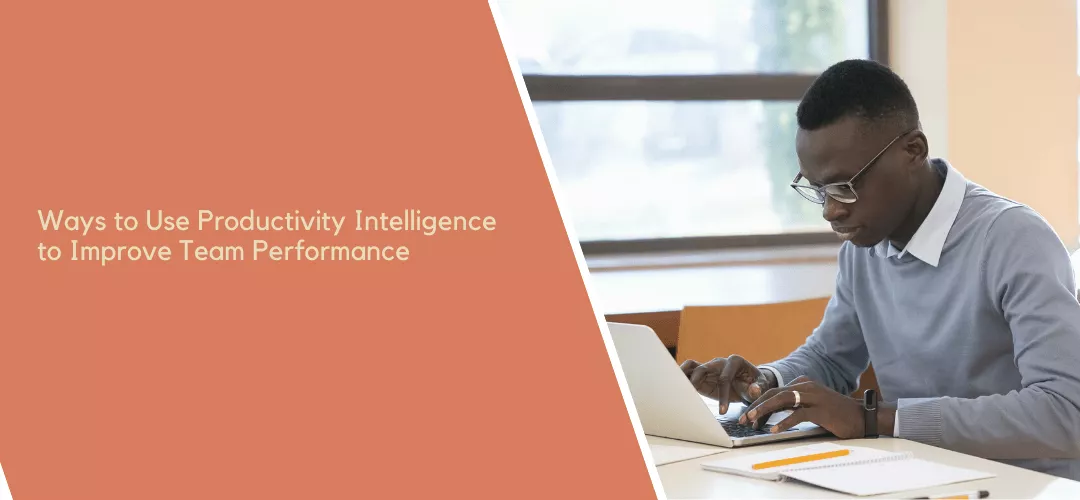
To optimize team performance, it is essential to understand how each team member works best. Productivity intelligence provides insights into how employees work so that managers can make data-driven decisions about allocating resources and setting expectations best.
By using productivity intelligence, managers can improve team performance by creating a more efficient workplace and better meeting the needs of individual team members.
"Productivity intelligence is the ability to understand, learn, and think through productivity measurements. It helps in taking decisions depending on how well-arranged data you collect for all productive measures taken by your employees. The collection of different productivity measures and data can be used to make intelligent decisions or set your business goals."
The concepts of productivity intelligence and PI are new to the field of organizational productivity. Organizations have long recognized the importance of productivity, but only recently have they begun to collect data on it systematically. PI combines data from various sources to assess organizational productivity comprehensively. This information helps grub out areas for improvement and enhancing efficiency.
Employers can get a clear idea about productivity obstacles or distractions. You can analyze the employee performance graf and can find the productivity hurdles. Distractions may include too much break time, usage of unproductive apps, increased idle time, usage of chats and messaging, etc.
While some distractions are inevitable, others can be minimized by changing workflows or schedules. By understanding the data on distraction, teams can make changes that improve performance.
Improper workloads affect productivity, find out the individuals getting the burnouts and help them by redistributing the workloads among the teams or team members. Equalizing the workload will increase the team's efforts, taking the load off one's shoulders.
By tracking workloads, employers can identify when an employee is taking on too much work and make adjustments to ensure that all employees are working sustainably. In addition, analyzing workloads data can help employers to identify patterns and trends that can use further to improve team performance.
This data will let you know the top performers of the company in the defined time range. This data can be used to identify the star performers, and they can share their feedback and experience with the other team members to get better performance team-wise.
Luckily, performance data tools can now give insights into your team's strengths and weaknesses. Using this information, you can make changes to help improve your team's performance.
Find out the need for collaborations. A successful business runs on team collaborations.
Encourage the teams or team members to work collaboratively. Collaborations are essential and can make goals and productivity more aligned.
Collaboration data helps managers and team leaders identify potential areas of improvement within their team. Understanding how team members interact and communicate with each other can make changes to improve team performance.
Compare teams' or employees' data to know which team is more efficient and productive. Later on, you can work on the team's skill set lagging behind to meet the efficiency.
By analyzing skillset data, management can get a clear picture of where each worker's strengths and weaknesses lie. With this information, they can change the team structure and assignments, leading to improved performance.
Compare manual work and automatic work to find out which tools can increase your productivity and efficiency. Tools can be a great way to increase productivity but which one to rely on depends on the comparison and decision.
Technology has revolutionized the workplace. How we communicate, collaborate, and even stay organized has changed drastically in recent years. However, a reliance on technology has contributed to a decrease in the neighborhood of separate interaction and teamwork. With the right tools in place, technology can help to improve team performance.
The timestamp is a workforce productivity enhancement analytical tool that helps project managers to understand how people work irrespective of working from home or the office. Our cloud-based productivity measurement software collects all the insights and productivity data that enable companies to be more productive and operationally efficient.
Time Champ's collaborative and transparent process lets you identify the productive areas your company is lacking. Our consultants can help encourage employers to the employee activities that need to be improved to take their productivity performance to the next level.
With 13+ years of experience in productivity intelligence and enhancement, the Time Champ is a well-versed tool with productivity experts backing it up.
Real-Time Productivity Measurement and Reports Help in Taking Proactive Decisions Rather than Reactive ones.
Get the Productivity Consultation as and When Required, Talk to Experts, and Get the Best Guidance and Direction.
Automatic Timesheets, Stealth Mode, Auto Invoicing, GSuite Integration, Compliance Management, Mobile Access, and Integrations are the Notable Features.
With the Power to Run on an Auto Pilot Mode, Employees need not spend any time towards Time Champ.